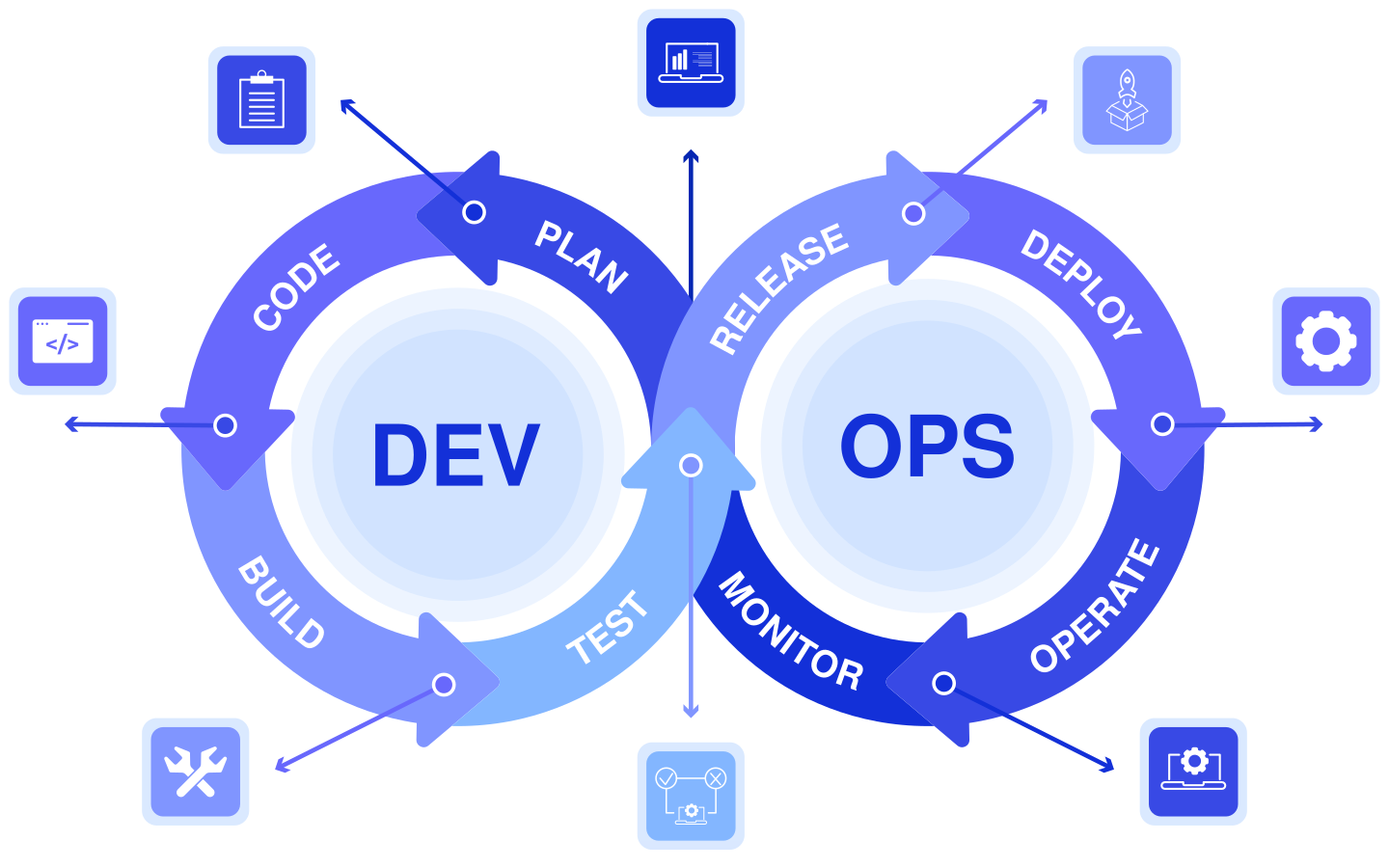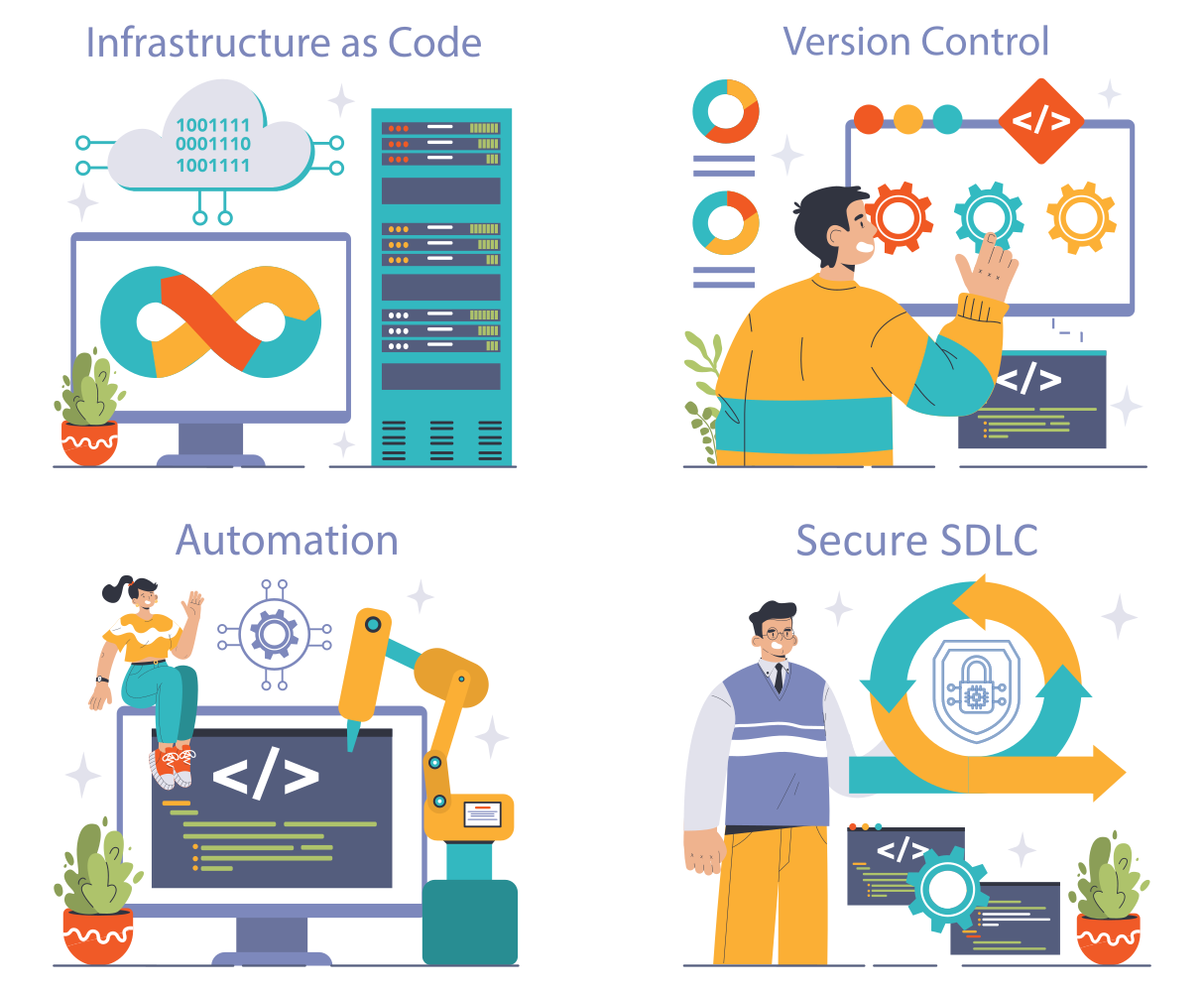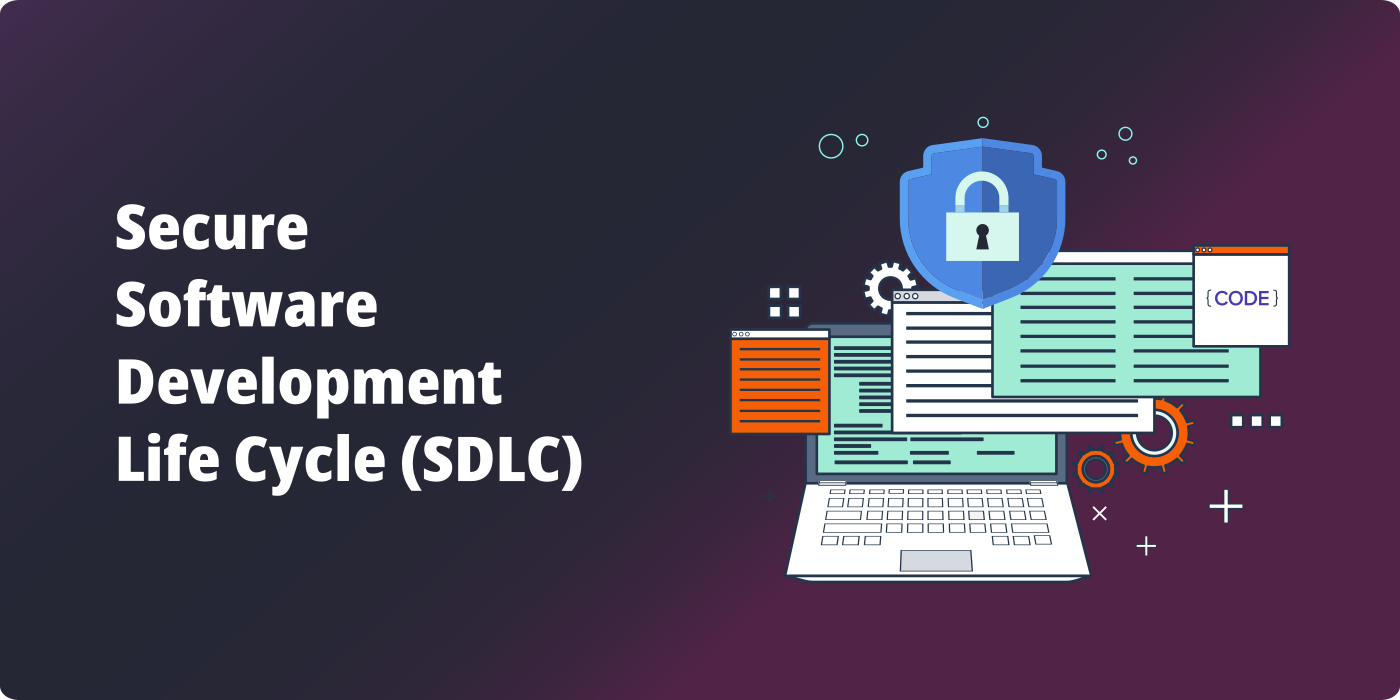Introduction
In today's digital era, where software applications underpin critical business operations, the importance of security in the software development process cannot be overstated. Cybersecurity threats are more sophisticated than ever, targeting vulnerabilities in software systems with potentially catastrophic consequences. To address these challenges, organizations have shifted towards integrating security into every phase of the Software Development Life Cycle (SDLC). This approach, known as DevSecOps, merges development, security, and operations into a cohesive framework that prioritizes security from the outset rather than treating it as an afterthought.
This blog post delves into the Secure Software Development Life Cycle (SDLC) within the context of DevSecOps. We will explore how this integration enhances the security posture of software products, the stages involved, and best practices implementing a secure SDLC effectively.
Understanding Secure Software Development Life Cycle (SDLC)
The Software Development Life Cycle (SDLC) is a structured process that outlines the stages involved in creating and deploying software applications. Traditionally, SDLC includes phases such as planning, design, development, testing, deployment, and maintenance. However, in many traditional development processes, security was often treated as a separate phase or merely as a final check before deployment. This siloed approach often leads to vulnerabilities being discovered too late in the process, making them costly and time-consuming to fix.
The Secure SDLC modifies this traditional model by integrating security practices at every stage. This approach ensures that security considerations are baked into the project from the very beginning, reducing the likelihood of vulnerabilities and improving the overall security of the software product.

DevSecOps: Integrating Security into DevOps
DevOps is a methodology that aims to shorten the software development cycle, increase deployment frequency, and deliver more reliable applications through continuous integration and continuous delivery (CI/CD). While DevOps focuses on streamlining development and operations, DevSecOps adds a crucial third component: security. By embedding security practices into the DevOps pipeline, DevSecOps ensures that security is a shared responsibility across all teams involved in the software development process.
DevSecOps is not just a set of tools or practices; it is a cultural shift that requires organizations to adopt a mindset where security is prioritized alongside speed and efficiency. This integration makes security an inherent part of the development process, from the initial design to deployment and beyond.
Stages of Secure SDLC in DevSecOps
Implementing a Secure SDLC within a DevSecOps framework involves several key stages. Each stage focuses on incorporating security measures that align with the principles of both secure development and the agility of DevOps. Let's explore these stages:
1. Planning and Requirement Analysis- Security Considerations: The process begins with identifying security requirements alongside functional requirements. This involves assessing potential threats, determining compliance needs, and defining security objectives.
- Threat Modeling: Early threat modeling allows teams to anticipate potential vulnerabilities and plan security controls accordingly. AI modeling tools such as ThreatModeler can be used to identify and prioritize potential security threats during the planning phase.
- Secure Design Principles: During the design phase, developers and architects should adhere to secure design principles such as least privilege, defense in depth, and secure defaults.
- Architecture Risk Analysis: Analyzing the architecture for potential security risks helps in identifying areas where security controls should be enforced.
- Secure Coding Practices: Developers should follow secure coding standards to prevent common vulnerabilities such as SQL injection, cross-site scripting (XSS), and buffer overflows.
- Automated Code Scanning: Integrating automated code scanning tools in the CI/CD pipeline ensures that security vulnerabilities are detected early in the development process.
- AI Assisted Tools: AI powered tools such as GitHub Copilot can be used for code suggestions, including secure coding practices.
- Static and Dynamic Analysis: Static Application Security Testing (SAST) and Dynamic Application Security Testing (DAST) should be incorporated into the testing phase to identify vulnerabilities in both the source code and the running application.
- Penetration Testing: Simulating attacks through penetration testing helps uncover vulnerabilities that automated tools might miss.
- Security Configuration Management: Ensuring that the deployment environment is securely configured is crucial. This includes managing secrets, enforcing encryption, and implementing access controls.
- Infrastructure as Code (IaC): Using IaC ensures that the deployment environment is consistent and secure across all stages of development.
- Continuous Monitoring: Post-deployment, continuous monitoring is essential to detect and respond to security incidents. The Security Information and Event Management (SIEM) tools like Splunk, QRadar and LogRhythm can play a crucial role in this phase.
- Patch Management: Regularly updating and patching software and infrastructure components helps mitigate the risks of newly discovered vulnerabilities.
Best Practices for Implementing Secure SDLC in DevSecOps
Implementing a Secure SDLC within a DevSecOps framework requires a strategic approach that balances security with the speed and efficiency of modern development practices. The following best practices are essential for integrating robust security measures into each phase of the SDLC while maintaining the agility that DevOps promotes.
- Shift-Left Security: Shift-left is a principle where security is moved earlier in the development process, particularly during the design and development stages. This proactive approach allows for the identification and mitigation of vulnerabilities before they become more complex and costly to address.
- Automate Security Testing: Automation is a key element of DevSecOps. By integrating automated security testing tools into the CI/CD pipeline, teams can ensure that security checks are continuously performed without slowing down the development process. This includes static analysis, dynamic analysis, and vulnerability scanning.
- Foster Collaboration Across Teams: DevSecOps thrives on collaboration between development, operations, and security teams. Regular communication and shared goals ensure that security is considered at every stage of development, leading to a more cohesive and secure product. The collaboration tools such as Jira facilitate collaboration and tracking of security issues, ensuring that security is integrated into the development workflow.
- Continuous Security Training: Regular training and upskilling of development and operations teams on the latest security threats and secure coding practices are essential. This ensures that all team members are equipped to handle security challenges effectively.
- Adopt a Zero Trust Model: The Zero Trust model assumes that threats could be internal or external and thus requires strict identity verification for everyone and everything trying to access resources on a network. Applying this model within a DevSecOps framework ensures that security is maintained even as the software evolves.

Challenges in Implementing Secure SDLC in DevSecOps
While the benefits of integrating Secure SDLC with DevSecOps are clear, organizations may face several challenges during implementation:
- Cultural Resistance: Transitioning to a DevSecOps model requires a cultural shift that emphasizes security across all teams. Resistance to change and the siloed nature of traditional development practices can be significant barriers.
- Complexity and Tooling: Integrating security tools into the CI/CD pipeline can be complex, particularly in large organizations with diverse development environments. Ensuring that the tools are effective and do not impede the development process requires careful planning and coordination.
- Skills Gap: DevSecOps requires a workforce with expertise in both security and agile development practices. Organizations may face challenges in bridging the skills gap and ensuring that their teams are adequately trained. The tools like Pluralsight provide training resources to help bridge the skills gap and address the challenges associated with DevSecOps implementation.
Benefits of Secure SDLC in DevSecOps
Despite the challenges, the benefits of adopting a Secure SDLC within a DevSecOps framework are substantial:
- Enhanced Security: By integrating security into every phase of the SDLC, organizations can significantly reduce the likelihood of security breaches and vulnerabilities.
- Faster Time to Market: Automation and continuous security testing allow for faster development cycles without compromising on security, enabling organizations to bring secure products to market more quickly.
- Cost Efficiency: Early detection and mitigation of security vulnerabilities reduce the cost associated with fixing issues later in the development process or post-deployment.
- Compliance and Risk Management: A Secure SDLC ensures that security and compliance requirements are met throughout the development process, helping organizations manage risk more effectively.
Conclusion
In the rapidly evolving landscape of software development, integrating security into every stage of the Software Development Life Cycle is no longer optional—it's a necessity. DevSecOps provides a robust framework for embedding security into the development process, ensuring that security is a shared responsibility across all teams. By adopting a Secure SDLC within a DevSecOps model, organizations can enhance their security posture, deliver more reliable software, and respond more effectively to emerging threats.
The transition to Secure SDLC in DevSecOps may present challenges, but the benefits of improved security, faster time to market, and cost savings make it a worthy investment. As cyber threats continue to evolve, the integration of security into the SDLC will play a critical role in safeguarding digital assets and maintaining the trust of customers and stakeholders.
